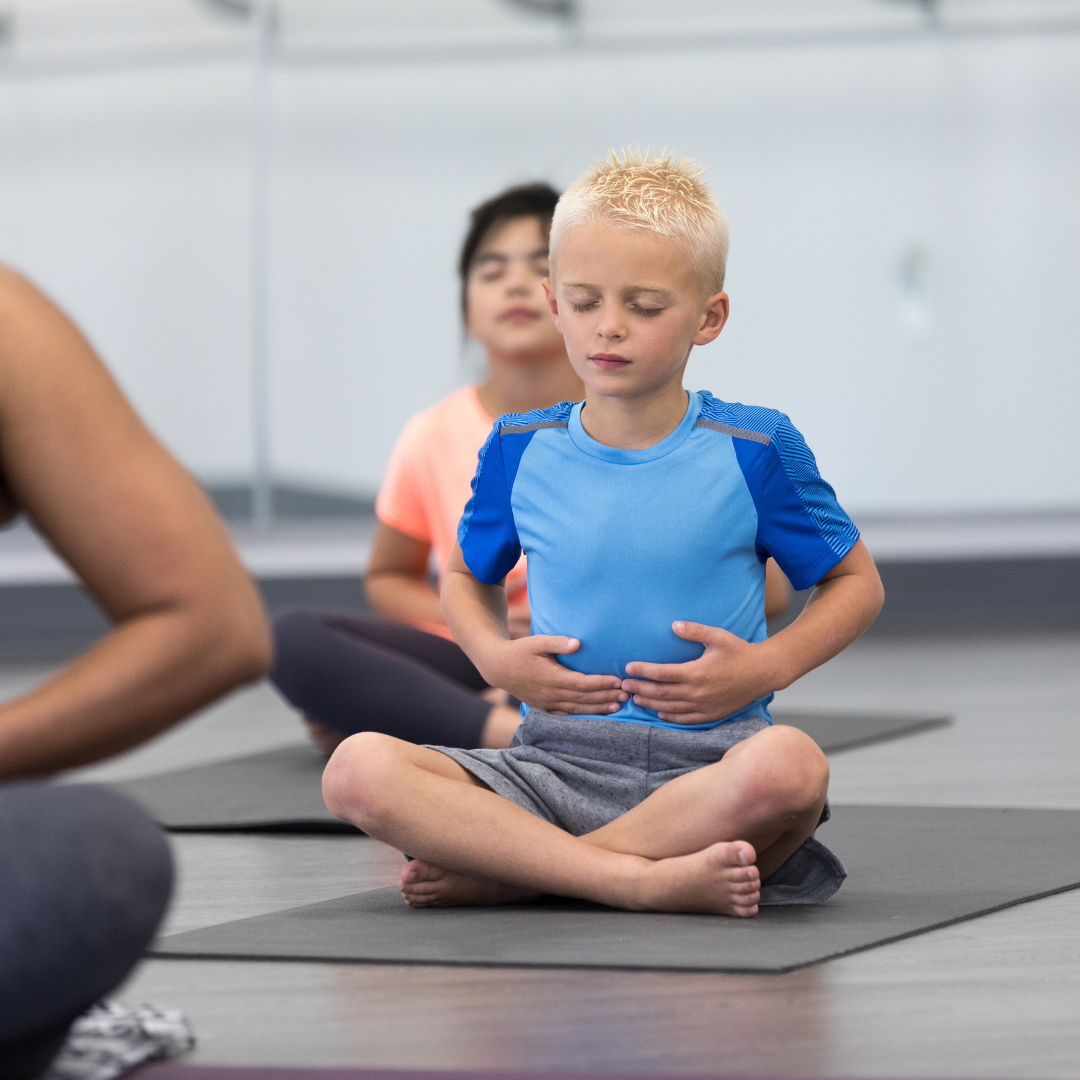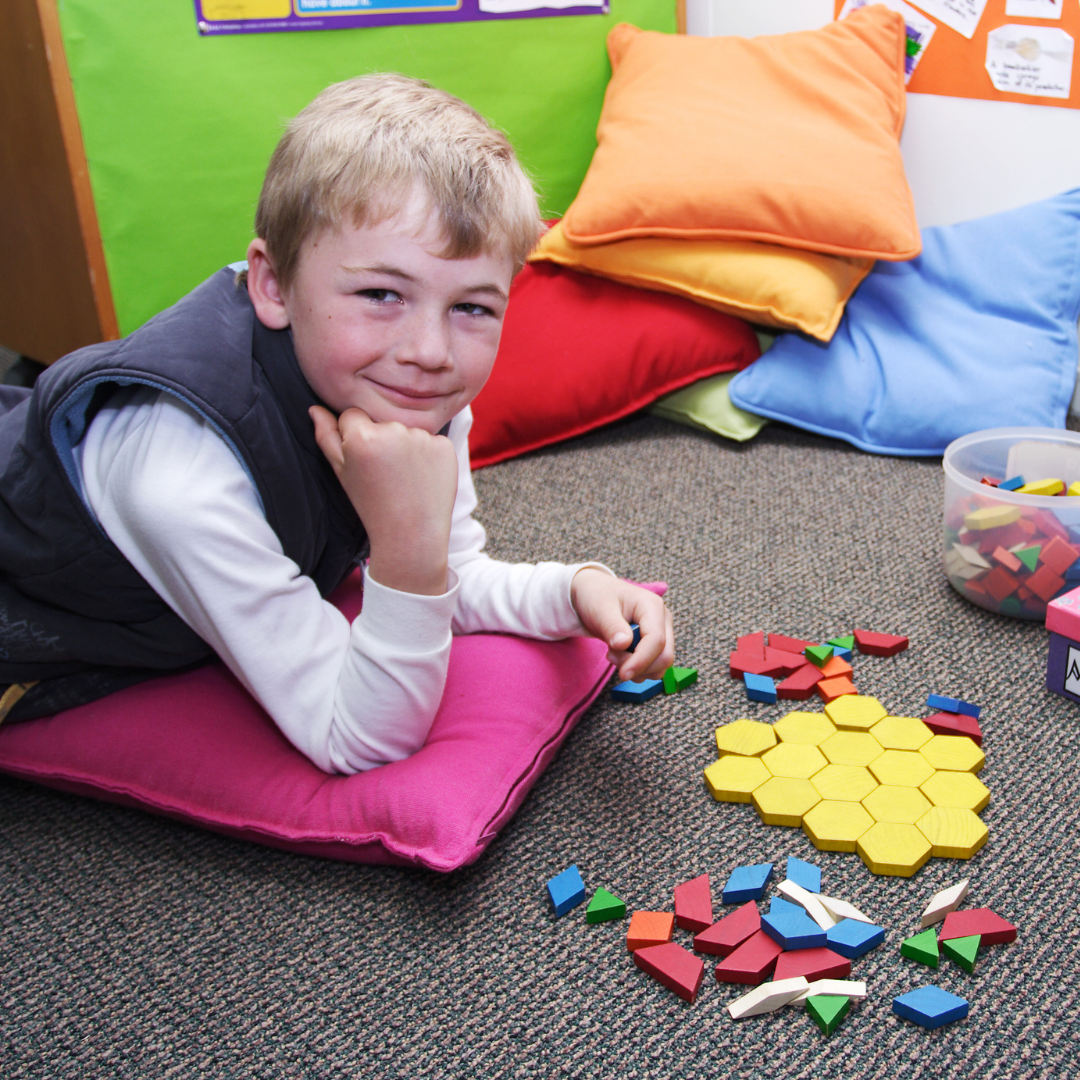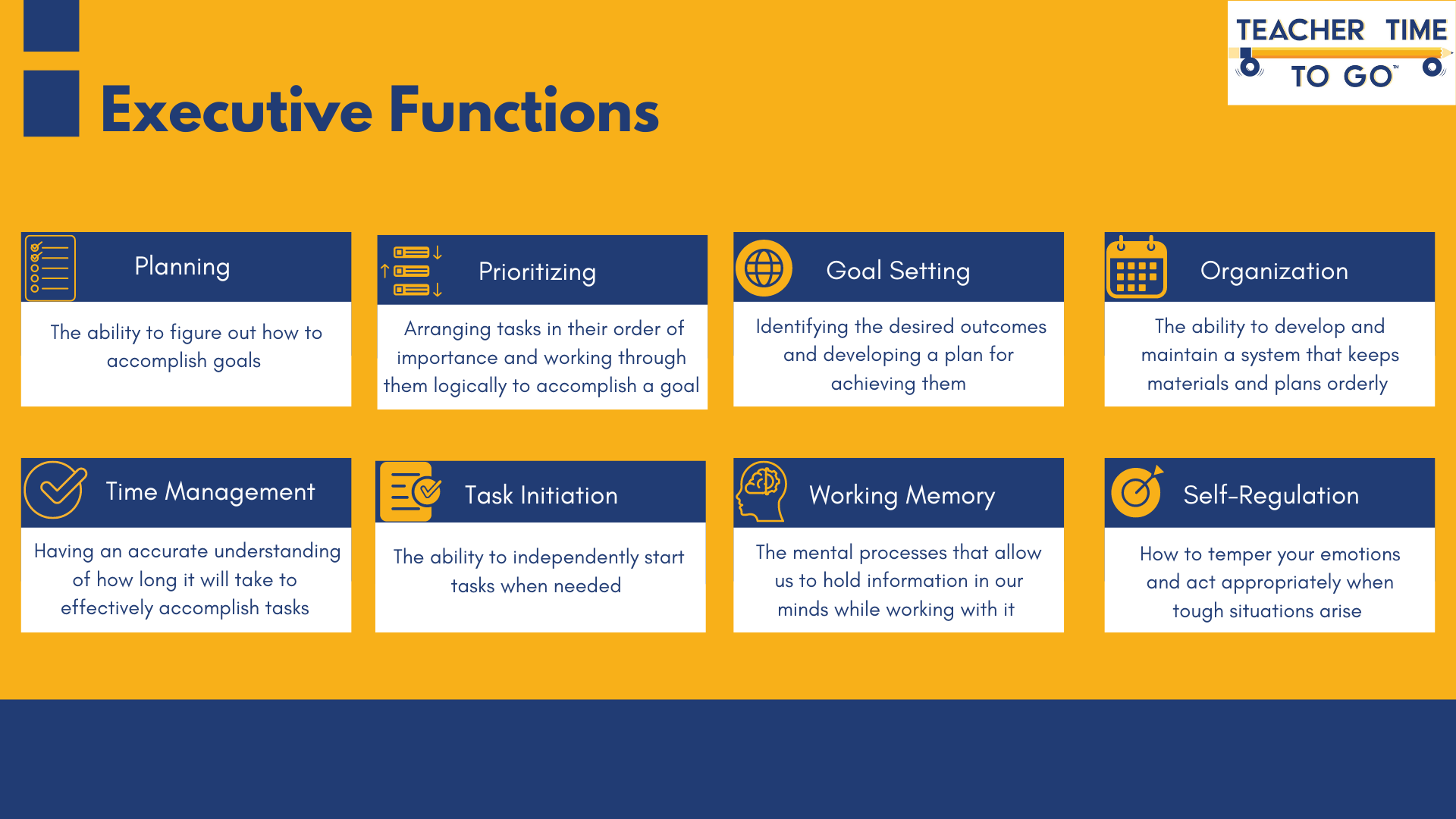Executive Functioning is best understood as the skills we use every day to learn, work and manage daily life. You can think of the term as the skills required to execute tasks.
This is the final post of an 8-part series highlighting Executive Functioning Skills. You will find definitions, parent recommendations and strategies that can be implemented for immediate support at home for families or in the classroom for teachers. My hope is that by helping you to understand what Executive Functioning is, you’ll be able to best support your child!
This post is all about Self-Regulation. Self-regulation can also be thought of as emotional control. This means being able to manage your feelings and reactions in a way that helps you feel better and make good choices. When we have good emotional control, we can handle things that might otherwise make us feel upset, angry, or sad.
Self-regulation can look like deep breathing, mindfulness strategies and proactive communication.
First and Foremost
Strong self-regulation skills offer several benefits, including:
1. Better Emotional Control: Children are better able to understand and manage their emotions in a healthy way. Instead of reacting impulsively to frustration, anger, or excitement, kids learn to pause, assess their feelings, and respond thoughtfully.
2. Improved Focus and Attention: Children are better able to concentrate on tasks, stay focused, and avoid distractions. It helps them maintain attention even when things become boring or challenging.
3. Better Academic Performance: Self-regulation directly impacts a child’s ability to succeed in school. Kids who can regulate their emotions and behaviors tend to perform better academically because they are better able to focus, persist through challenges, and manage their time.
4. Stronger Relationships: Kids are equipped to navigate social situations with more empathy, patience, and understanding. They’re able to manage their emotions and behaviors in interactions with others, leading to healthier friendships and fewer conflicts.
5. Increased Resilience and Coping Skills: Self-regulation fosters resilience—the ability to bounce back from setbacks. Kids who can manage their emotions are better equipped to cope with life’s challenges and persevere through adversity.
6. Reduced Impulsive Behaviors: Children are more skilled to think before they act, reducing impulsive behaviors like interrupting, acting out, or making hasty decisions.
7. Better Stress Management: Children who practice self-regulation are better at managing stress. They can handle stressors in a healthier way, whether it’s academic pressure, family issues, or social challenges.
8. Improved Impulse Control and Delayed Gratification: Self-regulation enables kids to practice delayed gratification and control their impulses, leading to more responsible and considerate behavior.
9. Greater Independence and Self-Sufficiency: They take ownership of their actions, set goals, and manage their tasks without needing constant supervision.
10. Positive Impact on Mental Health: Self-regulation is closely tied to mental well-being. Kids who can manage their emotions and reactions are less likely to experience anxiety, depression, or other mental health struggles.

Practice and Strategies
Here are some self-regulation strategies for kids that are simple, effective, and fun to practice!
1. Mindful Breathing
What It Is: Mindful breathing is a simple and effective way for children to calm down when they’re feeling overwhelmed. It teaches them to focus on their breath and the present moment.
How It Works: When kids are upset, anxious, or angry, they often breathe quickly or shallowly, which can make the emotions feel even more intense. Deep breathing helps slow down the heart rate and bring a sense of calm.
How to Practice:
- Balloon Breaths: Ask the child to imagine they are holding a balloon. Inhale deeply through the nose to “inflate” the balloon, and then exhale slowly through the mouth to “deflate” the balloon. This can be done for 3–5 breaths.
- Five-Finger Breathing: Have kids hold up one hand, and use their finger to trace up and down each finger. As they trace up, they inhale deeply. As they trace down, they exhale slowly. This is a calming technique that can be used anytime!
2. The Calm-Down Corner: A Safe Space for Emotions
What It Is: A Calm-Down Corner is a designated space where kids can go to regulate their emotions when they’re feeling overwhelmed, angry, or upset. It’s like a mini sanctuary where they can take a break and reset.
How It Works: When a child is having a hard time controlling their emotions, they can go to the Calm-Down Corner to engage in soothing activities like reading, coloring, or listening to soft music. The goal is to give them a quiet place to reflect and calm down before rejoining the group.
How to Set It Up:
- Find a quiet corner or spot in the house or classroom.
- Include calming materials like a soft blanket, stuffed animals, books, or calming sensory toys.
- Add visual reminders for children to use their coping strategies (like breathing, counting, or listening to music).

3. The STOP, THINK, CHOOSE Method
What It Is: This simple strategy encourages kids to stop and think before reacting to a situation, especially when they are feeling intense emotions like anger or frustration.
How It Works: When kids feel their emotions rising, they can use the following steps:
- STOP: Pause and take a moment to breathe and think before reacting.
- THINK: Ask themselves questions like, “How do I feel right now?” “What is making me feel this way?” “What will happen if I act this way?”
- CHOOSE: Choose a positive action or response, like using their words to express feelings or asking for help.
4. Use of Visual Timers: Time for a Break
What It Is: A visual timer helps children understand how much time is left for an activity or how long they need to take a break. It’s a great tool for children who struggle with transitions or who need help managing their time.
How It Works: Visual timers show the passing of time in a way that’s easy for kids to understand. It can help them feel more in control, whether it’s for taking a break, cleaning up, or transitioning between tasks.
How to Use It:
- Set the timer for a specific activity, like 10 minutes of playtime or 5 minutes to clean up.
- When the timer goes off, it signals the end of the activity and encourages the child to transition to the next task calmly.
5. Modeling and Talking About Emotions
What It Is: Children often learn how to regulate their emotions by watching adults handle their own feelings. Modeling positive self-regulation can help kids understand how to manage their emotions in difficult situations.
How It Works: By showing children how you regulate your own emotions, they can learn by example. It’s also helpful to talk to them about your emotions and coping strategies, so they understand that everyone experiences feelings, and there are healthy ways to handle them.
How to Practice:
- Talk about your own feelings: “I feel frustrated right now, so I’m going to take a few deep breaths to calm down.”
- Share coping strategies: “When I’m feeling nervous, I like to take a break and read a book.”
Resource Recommendation
For self-regulation, I recommend sensory tubes that are colorful textured and vibrant. These teach kids to sooth themselves with hands-on calming toys that help build social emotional skills with physical objects to deal with big emotions.

Final Thoughts
The biggest takeaway for Self-Regulation is recognizing the value in talking about emotions and understanding that coping strategies are personal and individualized.
This is the last post in our 8 part series. We hope that you found this series helpful! Below you’ll find everything compiled into one document for easy access.

Here at TT2G, we are working with about 500 families in the local community. Approximately 75% of our families request some sort of Executive Functioning Support. As you can see, this set of skills is a highly sought after service. Reach out to us if you feel that your child could use support in any of these areas. We have a variety of services that can best meet the needs of your student, from group workshops to individual assessment and support plans.
If you’d like to review the other posts in the series, you can find them here: Executive Functioning Overview, Prioritization, Goal Setting, Organization, Time Management, Task Management,and Working Memory.
Have a Self-Regulation strategy that works for you? We’d LOVE to hear from you!
Live.Laugh.Learn,
Jenn Starkie
Owner of Teacher Time To Go

